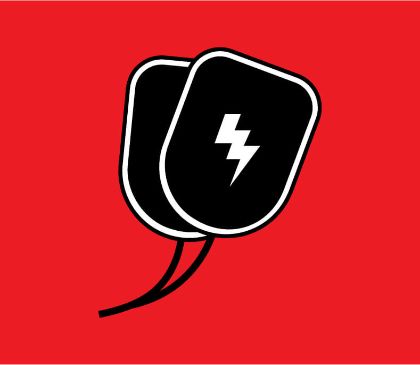10 Reasons Why AED Drills Are Important in Schools
- Dec 25, 2017

Discover why AED drills are important and learn how to run an effective drill.
AEDs can save lives, but only if educators and administrators are prepared to take action. Tornado, fire, lockdown, and even active shooter drills are the norm for most schools across the country, but when is the last time you scheduled a sudden cardiac arrest (SCA)/AED drill?
In this post, we’ll discuss the reasons why SCA/AED drills are important in schools and we’ll give you the tools you need to create an effective drill.
Why are AED Drills Important? SCA is Shockingly Common in Schools.
If you’re a by-the-numbers kind of person, here are a few statistics about SCA in schools and in children under the age 18:
- In the United States, 1 in 25 schools experiences an SCA event each year.
- In 2017, 7,037 children died from cardiac arrest.
- Schools are community gathering places, and adults are even more likely to suffer an out-of-hospital cardiac arrest in a school setting than young adults.
- The hospital survival rate of students who experience SCA in a school with an AED is approximately 70%.
- The hospital survival rate of students who experience SCA in a school without an AED is approximately 8%.
- Student-athletes are more than 2 times as likely to die from SCA than non-athletes.
- 66% of the deaths caused by SCA in children occur during regular exercise.
- SCA caused by commotio cordis is the most common cause of traumatic death in youth baseball.
- Survival decreases an astounding 10% every minute until a defibrillator shock is applied.
- SCA in young people can be caused by Long QT Syndrome, commotio cordis, or congenital heart disease.
- How to Run an Effective AED Drill: Create, Practice, and Review.
- Developing and running effective AED drills are an essential part of your school’s emergency plan. Because the single most important contributing factor for survival of SCA is minimizing the time from collapse to defibrillation — survival decreases an astounding 10% every minute until a shock is applied — knowing what to do and how to do it quickly may save a life of a student, parent, or school employee.
- Regularly scheduled drills can test your team and your student body’s readiness and their ability to act quickly and to respond appropriately in the event of a cardiac emergency.
- The Sudden Cardiac Arrest Foundation’s publication Saving Lives in Schools and Sportsrecommends developing and conducting practice drills for your cardiac Emergency Action Plan (EAP); it’s the best way to make sure it works! Then, once you’ve executed your drill, be sure that you conduct a detailed post-drill review so you and your team can make changes based on real-life scenarios.
- Planning Your AED Drill
Here’s a convenient checklist for your annual or semi-annual AED drill:
- Inform your team that you’ll be conducting a drill in the next week or two so they have an opportunity to review your EAP.
- Make sure your staff is trained in adult, child, and infant CPR.
- Choose a scenario that fits your setting.
- Designate an observer/proctor to administer the drill.
- Develop a drill worksheet (this worksheet should include the scenario for the drill, the time the drill commenced, when the victim was found, time the rescuer called 911, when chest compressions started, when other bystanders arrived on the scene, when the AED arrived on the scene, when AED training pads were applied, and the names of each individual performing the actions).
- You’ll need an appropriately-sized CPR Manikin, AED trainer, AED, and a timing device.
- Day of AED Drill
- On the day of your school’s AED drill, your designated observer will place the CPR manikin in an appropriate, visible location. As soon as the manikin has been observed and someone has activated the EAP, the observer should note the time and read the scenario to the responders.
- As soon as the responders have obtained the AED from its usual location, the observer should hand the rescuers the AED trainer to continue the drill (if possible, ask an assistant to return the emergency-ready AED to its clearly marked and accessible location). Do not use your emergency-ready AED for the drill! During this time the observer will record times and responses. If possible, the observer should take a video recording of the drill for post-drill evaluation.
- After Drill Review
- First, congratulate your team on a job well done! Then give everyone some time to process and think about their part in the drill. After everyone has had a day to think about how things went, bring your staff members together for a detailed analysis of your AED drill. Ask your educators what they thought went well. If possible, review the video of the drill. Ask your observer to note what the rescuers did right and what they could have been done better. Consider which parts of the drill went smoothly and which parts were more challenging.
- If you make changes to your emergency action plan, be sure to communicate those changes and schedule another drill for later in the school year!
- For more information about AED packages for your school or AED and CPR training, call the team at Cardio Partners and AED.com at 800-544-0004 or email us at customerservice@cardiopartners.com.
- Sources: American Heart Association, American College of Cardiology, Resuscitation Journal, Close the Gap, Children’s Hospital of Philadelphia, National Institute of Health, C.S. Mott Children’s Hospital.






 CALL US:
CALL US: